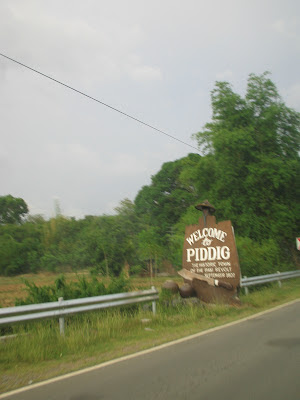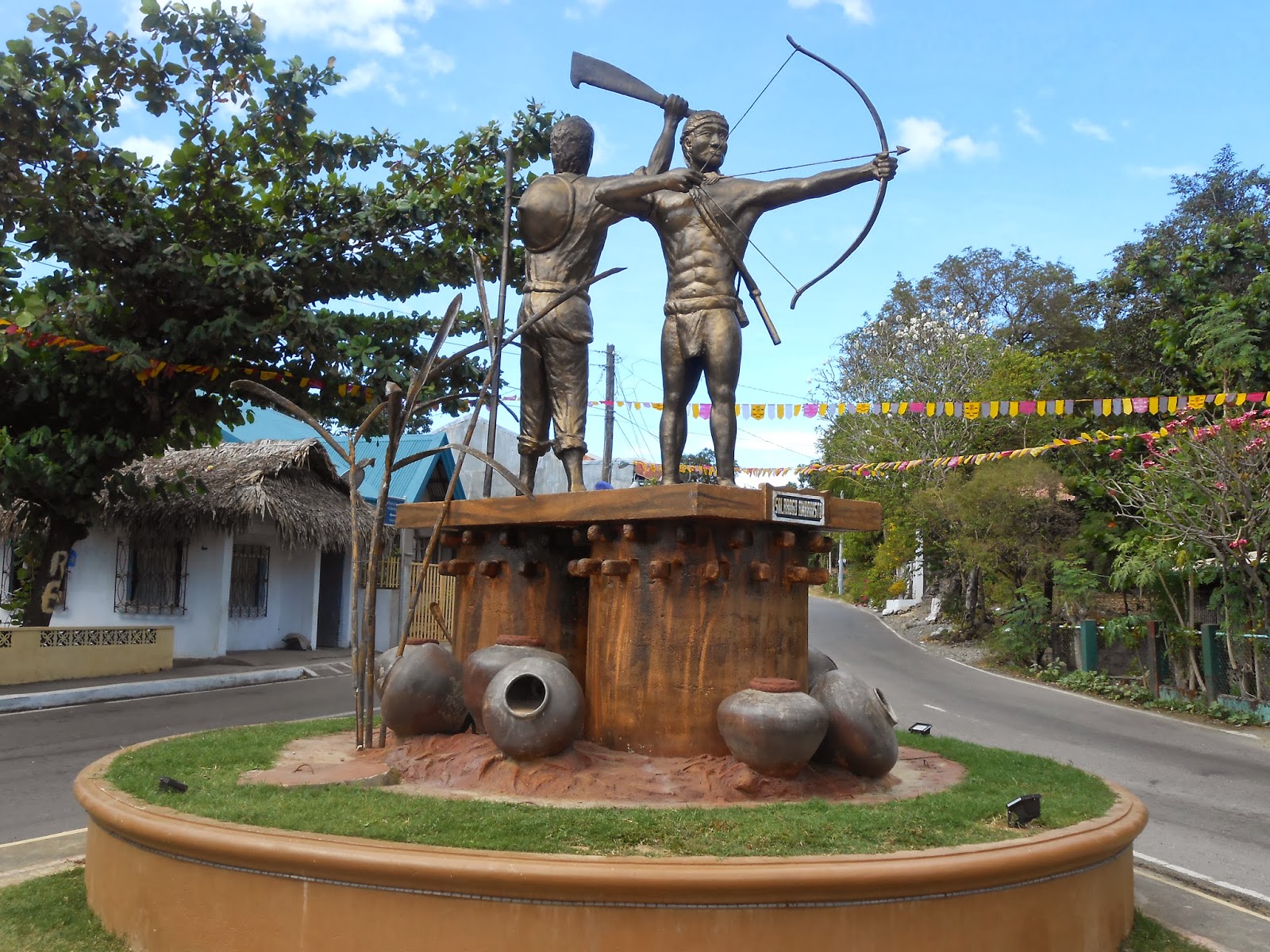HISTORICAL MONUMENT OF PIDDIG
 |
| Basi Revolt |
The Philippines is an alcohol loving country. No matter what life style they have, wines and liqueur are always available when Filipinos are celebrating spacial occasions. Even without any occasion they still drink, you can see a group of men in the streets sitting with an alcoholic beverage in front of them, they may also invite you to drink when you pass by even if you are not a drinker. Times like this strengthens brotherhood among neighbors in any part of the Philippines. In fact, a liqueur alone is enough to celebrate ones birthday.
Aside from grapes the country is full of different wines made out of berries. There are also wines that are originally improved and made by the natives like the Tapuey (a rice wine of the Igorot and Ifugao), Lambanog (wine from coconut), Basi (an Ilocano wine made form sugarcane) and many more. In connection, the production of wine or Basi in Ilocos Norte has an important contribution in history.
The Basi Revolt is a symbol of heroic movement of the Ilocanos love for Basi particularly in Piddig, Ilocos Norte. The Basi Revolution happened during the Spanish era, when the government forbid the private manufacturers to sell Basi in the public and force the market (the people) to buy Basi from the government.
The Basi Revolt Monument in the highway of Piddig has a Salakot ( native hat), Kalasag (shield), Badang (bolo), and Burnay (ceramic jar).
The Salakot ( native hat) may simbolize the Filipinos who joined this revolution.
The Kalasag (shield) may simbolize the strength, unity, and solidity of Ilocanos.
The Badang (bolo) may sibolize the bravery of the members to fight for their right and love.
The Burnay (ceramic jar) may simbolize the Basi that the revolutionaries are fighting for. The Burnay is where the Basi is being fermented.
The Basi revolt never succeeded but it serves as stepping stone for achieving freedom. It deserves a recognition among Ilocanos because it reminds them their ancestors culture and story of preserving the Piddiguenos history. This is then engraved in a limestone that is installed in the monument of Basi revolt.
 |
| summary of 1807 Basi revolt |
 |
| "Panag-tubo" harvest of sugarcane |
 |
| covered "Dadapilan"- not in use |
| Antique Dadapilan |
 |
| Dadapilan - a cattle drawn wooden mill used to squeeze sugarcane in the process of extracting "Bennal", the process is called "Panagdapil" |
The sugarcane extract is heated in the Karaang and Sinublan for at least 30 minutes before transferring it to the Burnay . The Karaang is covered in rice hull if not in use so that when ever the "Mammasi" (one who makes Basi) need it, it is easier to dig unto it.
 |
| Samak /Binunga - a tree that belongs to the family Moraceae, it is an ingredient for brewing Basi that adds color and unique flavor in it. |
The bark, fruits and leaves of Samak (Macaranga tanarius) tree is pounded and sometimes dried then added in the sugarcane extract before the fermentation process to attain its unique flavor. Binuñga is a small, dioecious tree,
growing to a height of 4 to 8 meters. Leaves are peltate, ovate to
oblong-ovate, 10 to 25 centimeters
long, with entire or toothed margins, with a rounded base and
pointed apex. Male flowers are small and born on slender, branched
peduncles which are shorter than the leaves. Female flowers are
usually found in simple panicled spikes or
racemes. Capsules are 10 to 12 millimeters in diameter, of 2 or 3
cocci, covered with pale,
waxy glands and with soft, scattered, elongated spinelike
processes ( http://www.stuartxchange.com/Binunga.html).
 |
| Burnay - a ceramic or earthen ware used in brewing Basi, it comes in different sizes. -not in use- |
 |
| Basi under fermentation |
According to Tata. Fernando Felipe (a mammasi in Brgy. Tonoton -town of Piddig, province of Ilocos Norte) during his childhood days, Basi is made by borrowing the Burnays under their houses for several months or years. Others borrow their Burnay underground then plant banana on top of it, it will serve as a marking where the Burnay is located. The mammasi will wait until the Banana will bare fruits. At the time they will harvest the fruits of Banana, it is also the time that they will dig up the Burnay which contains Basi. Today, this methods of brewing Basi are no longer practiced.
 |
| BS Forestry students with Tata. Fernando Felipe Socio-cultural development |
Tata. Fernando Felipe owns a Dadapilan which he uses in extracting the sugarcane for more than a jubilee. He stated that his Dadapilan is made out of Sagat/Molave (Vitex parviflora), it was erected when he was still 6 years old, today he is already 81 years old.







Hi
ReplyDeleteI would love to use your photo of the Basi Revolt Monument in my show on The Travel Channel. Please email me at janine@karga7.com.
Thanks
I would like to request permission to use the photo of Basi Revolt monument. The material will be incorporated in our grade school worktext, Kamalayang Panlipunan 5 WT, MATATAG Edition. Please contact me via email at aphipermission.cc@abiva.com.ph.
ReplyDelete